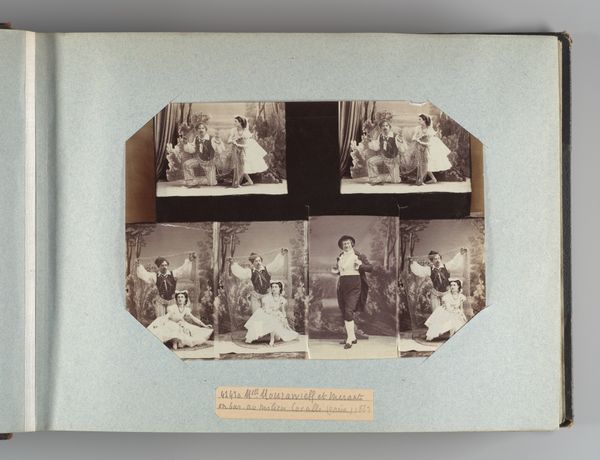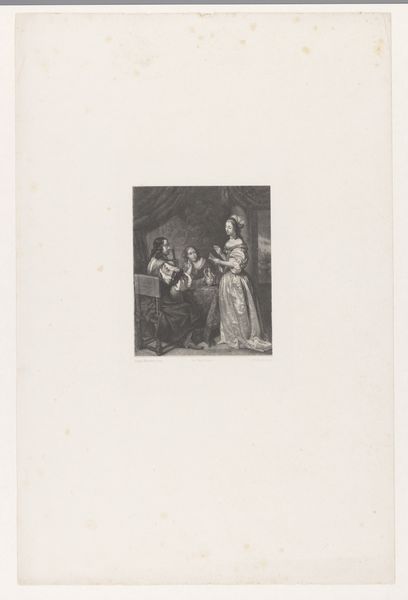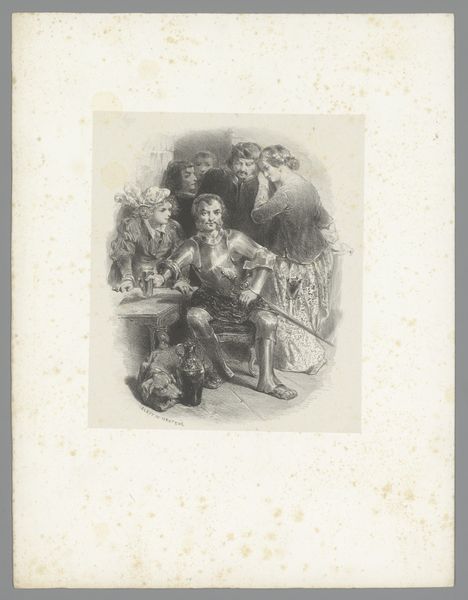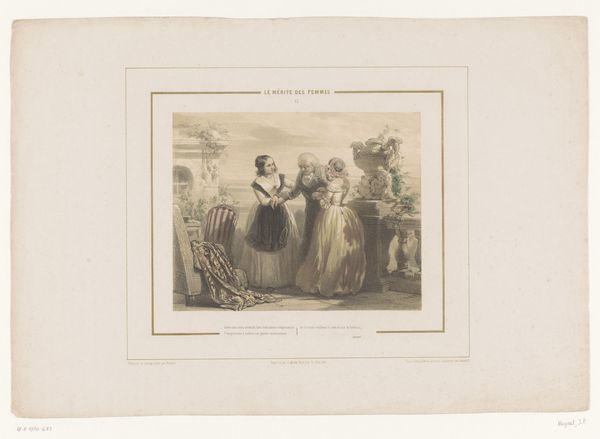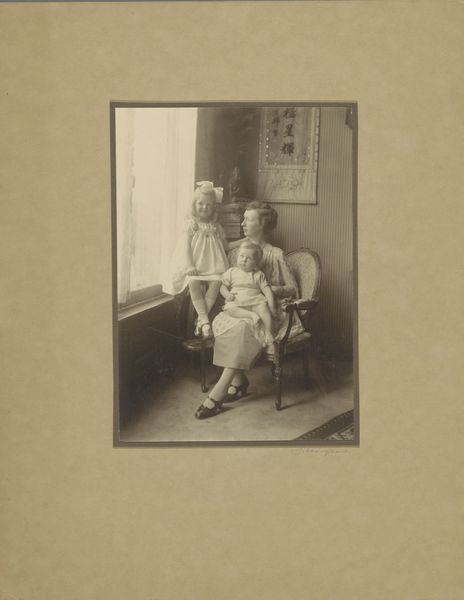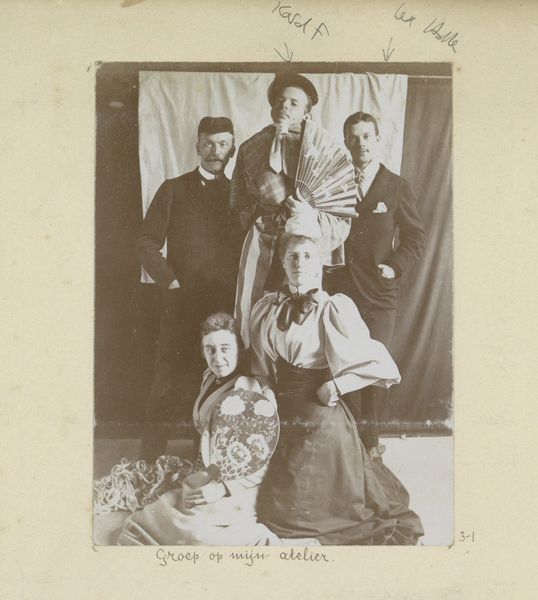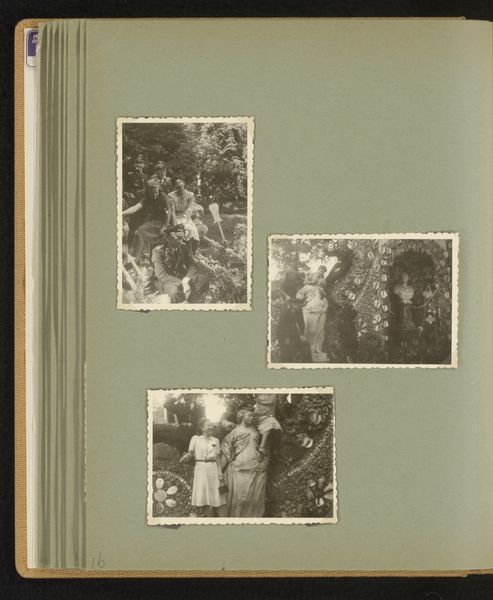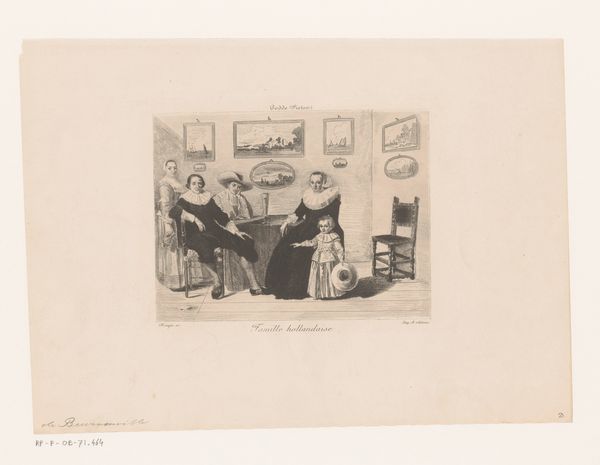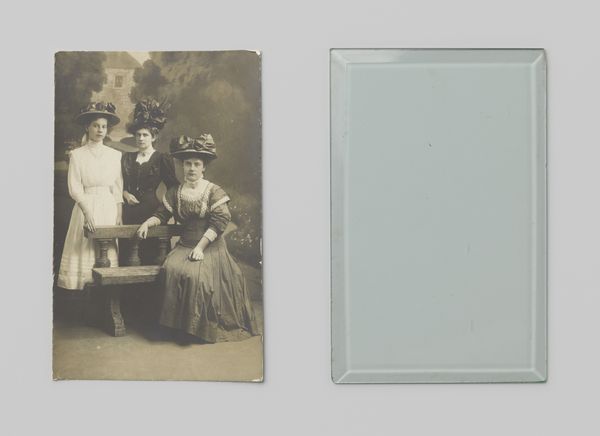
Groepsportret in studio; zes mannen en vrouwen zittend, liggend en staand rond een bank c. 1900 - 1920
0:00
0:00
photography
#
portrait
#
photography
#
genre-painting
Dimensions: height 126 mm, width 168 mm, height 240 mm, width 297 mm
Copyright: Rijks Museum: Open Domain
Editor: We're looking at "Groepsportret in studio; zes mannen en vrouwen zittend, liggend en staand rond een bank," a photograph from circa 1900-1920 by J.R.J. Huybers van het Vetter. It's a staged studio shot and it strikes me as a tableau vivant, perhaps depicting a scene from a play. What do you see in this piece? Curator: I agree. It's definitely performative. Thinking historically, early photography served multiple social functions. Besides documentation, which this doesn’t appear to be doing, it aimed at social aspiration and creating a certain identity. This feels very constructed, almost theatrical as you observed. Look at the composition: are they a family or a troupe of actors, staging an emotional scene for the camera? What are your thoughts on this staging? Editor: That’s a great point. Their postures seem both deliberate and slightly awkward. The woman reclining looks very melodramatic! The men have an awareness to them; posing in anticipation of the camera’s click. Curator: Exactly. That self-awareness points to how the very act of photography, particularly in the late 19th and early 20th centuries, was about crafting a particular public image. The studio setting itself is important, it acted as a container for that presentation of self. It is fascinating to see how people navigate this performative aspect even when seemingly caught “off guard." This adds a critical lens to interpreting genre-painting photographs like these! Editor: That makes so much sense! So, this isn’t just a picture, it's a carefully constructed statement about who these people wanted to be perceived as being, in society? It’s no accident then. Curator: Precisely. It reflects how societal expectations and the rise of mass media deeply influenced even the most personal of portraits, blurring the lines between public and private identity. We both have much to ponder about our perceptions regarding that line, then and now. Editor: Absolutely, that definitely shifts my perspective on photography from that time. Thanks!
Comments
No comments
Be the first to comment and join the conversation on the ultimate creative platform.
